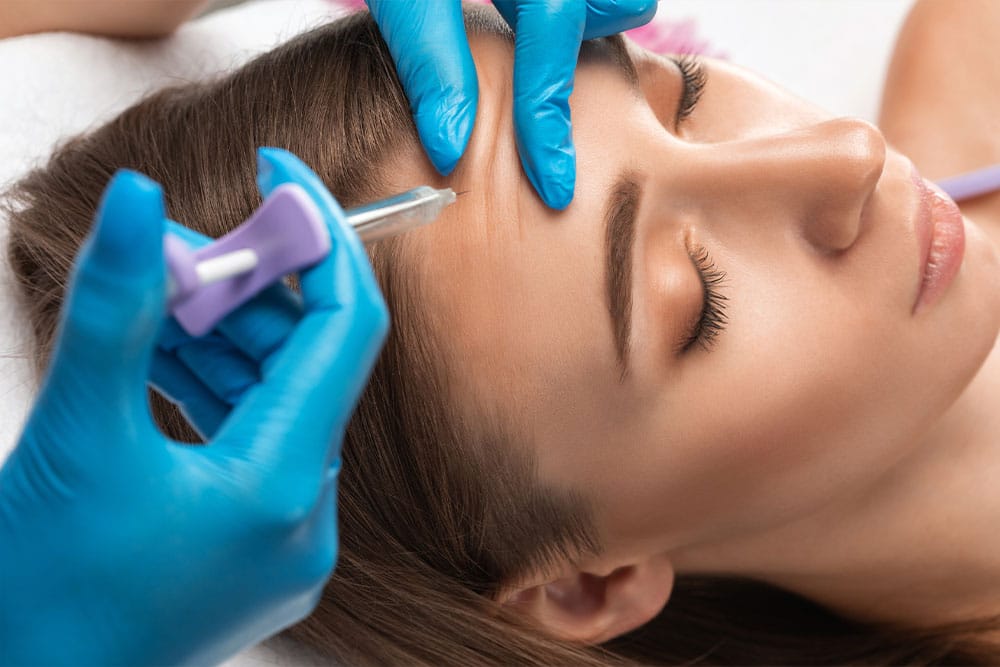
You may have noticed the first faint lines creeping onto your forehead or maybe a deepening crease between your brows that won’t seem to fade. Perhaps you’ve seen friends or influencers rave about Botox, showing off smooth, wrinkle-free skin, and you’re wondering if it’s time to start your own journey with neuromodulators like Botox.
While Botox is widely praised for its ability to smooth out fine lines and prevent deeper wrinkles, you may have also heard a concerning claim: that long-term Botox use can eventually age you. Is there any truth to this? Or is it just another aesthetic myth? In this article, we explore whether Botox truly helps or harms your skin in the long run.
How does Botox typically work?
Facial expressions like smiling, frowning, and squinting are controlled by muscles beneath the skin. These muscles contract and relax constantly throughout the day, causing movement in the skin above them. Over time, as we repeatedly make these facial expressions, the skin starts to develop lines and wrinkles—especially in areas like the forehead, between the eyebrows, and around the eyes (known as crow’s feet).
When Botox is injected into a specific muscle, it prevents it from contracting as strongly. It doesn’t freeze your face or make you look expressionless—just enough to stop excessive movements that would otherwise cause deeper wrinkles. Botox does this by blocking the release of acetylcholine, which is responsible for transmitting signals from your nerves to your muscles. When Botox prevents the release of acetylcholine, the muscles can’t contract as effectively. This helps smooth the skin on top and prevents new wrinkles from forming.
Preventing wrinkles before they start
While Botox is FDA-approved for existing wrinkles, many people are now turning to it as a preventative measure. This means getting Botox injections before visible wrinkles appear. When injected in small, controlled doses, Botox prevents dynamic wrinkles caused by repetitive facial movements like frowning, squinting, and raising eyebrows. By stopping these movements, Botox allows the skin to rest, preventing deeper creases from forming over time.
This preventative approach is why so many people in their 20s and 30s are turning to Botox earlier than ever before. Rather than waiting for wrinkles to set in, they choose Botox to “train” their facial muscles to move less, reducing the wear and tear on their skin.
Can long-term Botox use weaken your face?
Despite its benefits, some experts warn that excessive Botox use can lead to muscle weakening over time. Here’s how:
- Muscle atrophy: When a muscle isn’t used regularly, it can shrink or atrophy. If you continuously paralyze facial muscles for years, they may weaken, leading to a flatter, less toned appearance. This can keep your face from looking sharp and strong.
- Skin thinning: Long-term use can sometimes make the skin appear thinner, particularly in areas like the forehead, where Botox is frequently applied.
- Compensatory wrinkles: If one muscle group is weakened, your body may compensate by overusing other muscles. For example, if your forehead muscles are consistently frozen, you may engage the muscles around your eyes or mouth more, leading to wrinkles in new places.
However, these effects are generally linked to overuse, not Botox itself. Properly administered doses by skilled injectors, like those at Aesthetic Assets in Scottsdale, ensure natural-looking results that maintain facial balance while softening existing wrinkles and preventing new ones.

The importance of moderation
Like most things in aesthetics, balance is key. Botox should be used as a tool for subtle enhancement, not total muscle paralysis. The right approach involves:
- Using conservative doses: Instead of overloading an area, targeted micro-injections help prevent wrinkles while preserving natural movement.
- Spacing treatments appropriately: Most people need Botox every three to six months, but those with weaker muscles may need less frequent treatments.
- Adjusting as you age: Your facial structure, muscle activity, and skin elasticity change over time, meaning your Botox needs will shift, too.
At Aesthetic Assets, our injectors assess your unique facial anatomy to determine the ideal Botox routine for your needs, ensuring results that keep you looking fresh, not frozen.
What happens if you stop Botox?
A common misconception is that stopping Botox will make you look older than before. In reality, once Botox wears off, your muscles regain movement, and your face returns to its natural state. Wrinkles that Botox prevented from deepening will not suddenly appear worse; they will simply resume progressing at a normal rate.
However, if you’ve been using Botox for many years and your muscles have weakened, it might take some time for them to regain full strength. This is why it’s so important to work with an experienced injector who takes a personalized approach. Proper dosing prevents unnecessary muscle weakening while still keeping your skin smooth.
The final verdict: Does Botox age you?
The idea that Botox causes aging is largely a myth—but with a caveat. Used correctly and in moderation, Botox is an excellent preventative treatment that keeps wrinkles at bay and helps you maintain a youthful appearance. However, excessive and poorly administered Botox can weaken facial muscles, causing an unnatural or aged look over time. The key is working with a skilled provider who understands the nuances of facial anatomy and aging.
At Aesthetic Assets, our philosophy centers on enhancing your natural beauty while ensuring that your treatments support, rather than compromise, your long-term aesthetic goals. If you’re considering Botox or want to explore other anti-aging options, book a consultation to discuss the best approach for maintaining youthful, healthy skin—both now and in the years to come.
